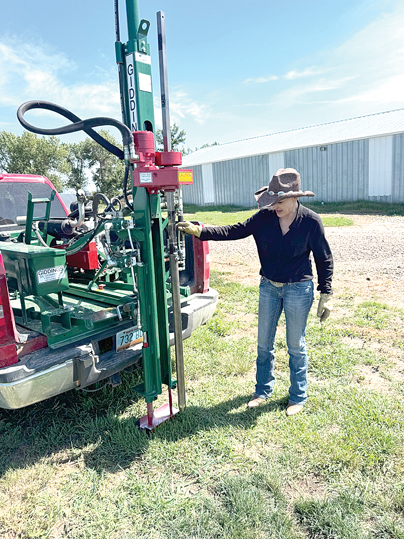Projects Demonstrate Carbon Capture Ranchers Can Get Behind

By Michael Standaert
North Dakota News Cooperative
Ranchers across North Dakota are increasingly looking to add value to the cattle they raise.
Some do that through marketing their beef as grass-finished, or minimizing the use of antibiotics and hormones. Others look to niche markets by using heritage breeds or seeking organic certifications.
Still more are looking to carbon credits and other sustainable practices to add value to their livestock and land, and two tip-of-the-spear projects in North Dakota may help them achieve this goal.
Through using rotational, managed grazing practices on a ranch near McKenzie, North Dakota over the past two years, scientist Rebecca Phillips and her ranch partner Lewis Heaton were able to show an increased amount of carbon storage in the soil at the working cattle ranch.
Rates of storage were higher compared to standard grazing techniques, potentially generating carbon credits that can later be sold on carbon markets.
A carbon credit is a unit signifying one metric ton of carbon dioxide that is not getting into the atmosphere by being captured or reduced through an implemented process.
For a coal-fired power plant, that means capturing it before it comes out the stack. For these ranchland projects, it means keeping more CO2 in the ground than standard grazing practices would.
Precise numbers for carbon sequestered on Heaton’s 300-acre ranch with 150 cow-calf pairs haven’t been finalized as Phillips still needs to have her research go through a peer-review process, she said.
“The buyers are all asking him about our numbers because this project represents the first experimental evidence of the annual net ecosystem carbon balance for cell-grazed pastures in production,” Phillips said of the growing interest in the project.
Heaton said he already has offers from three different companies to buy carbon credits generated by the project, but said it will take time for both this type of carbon credit generation and the voluntary carbon market itself to mature to really make it viable.
“The voluntary carbon market is not very high right now, per metric ton, but it’ll probably come around in time once we understand a little more,” Heaton said. “There’s always been a question about the ability of rangeland soil to store carbon long-term, and that’s what this study would help.”
Carbon market do or die
A big factor will be future demand for carbon credits, with scenarios widely divergent on what prices will look like in 2050.
In 2024, Bloomberg New Energy Finance projected that by 2050, carbon credits could balloon to $238 per metric ton on the high end, or stagnate to settle at just $14 on the low.
A new project Phillips is now launching on her own land near Hazelton, North Dakota, aims to duplicate what was learned in McKenzie. The hope is to solidify data backing the practices and their potential for storing more carbon in the soils and grasses under the hooves of cattle.
